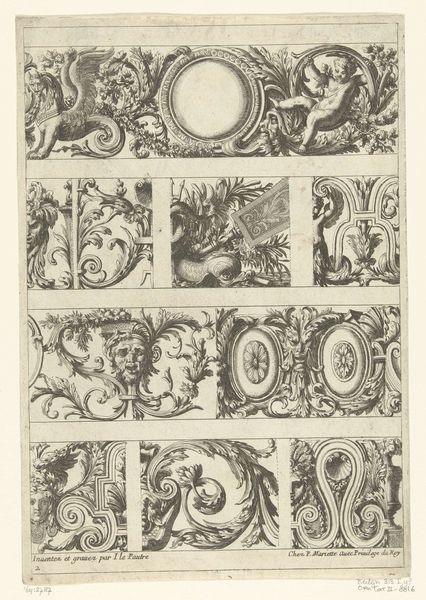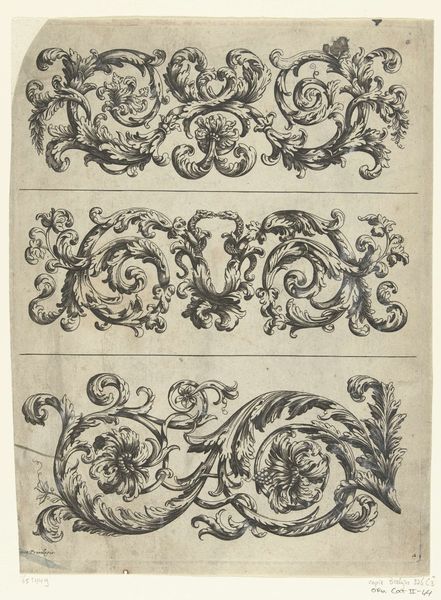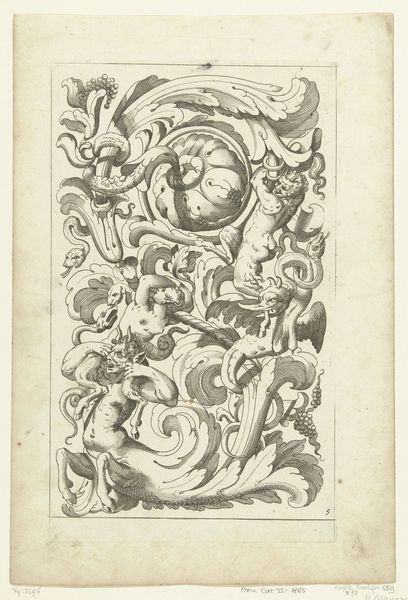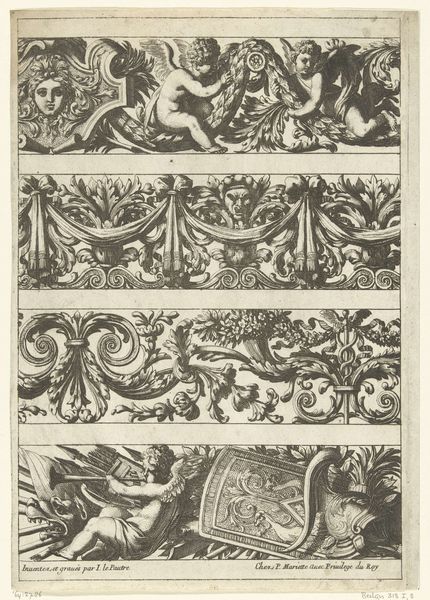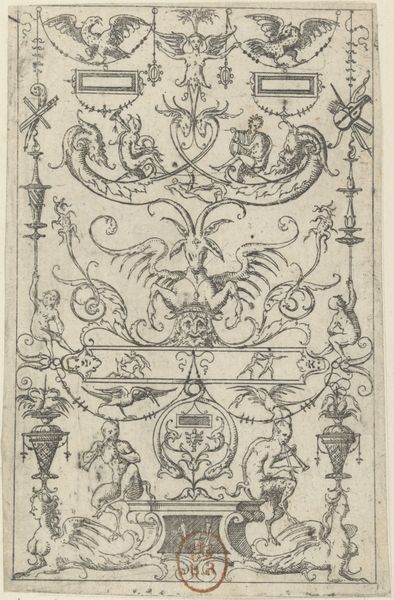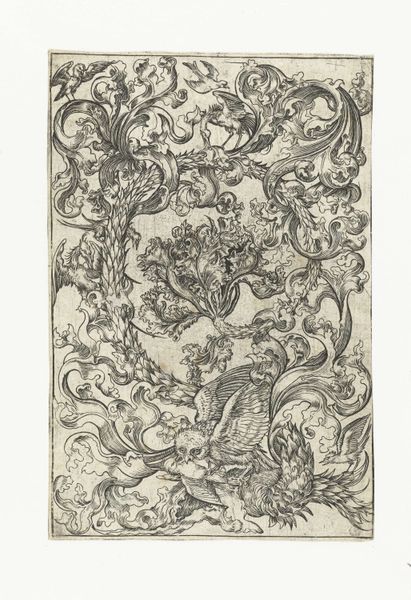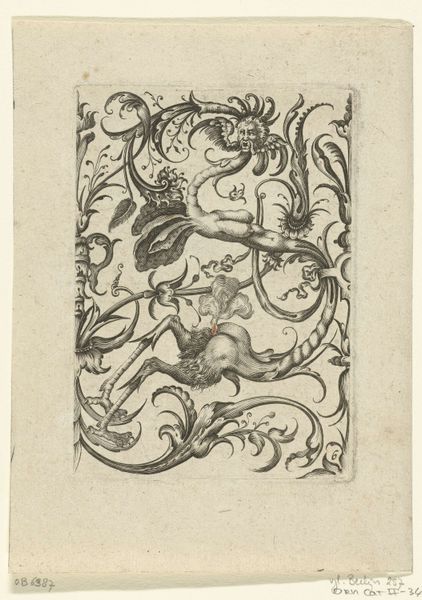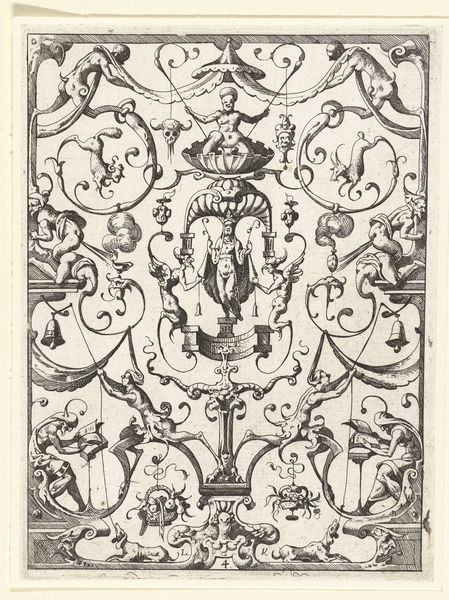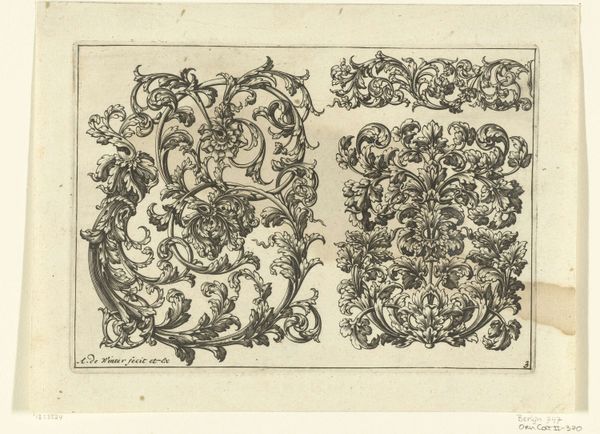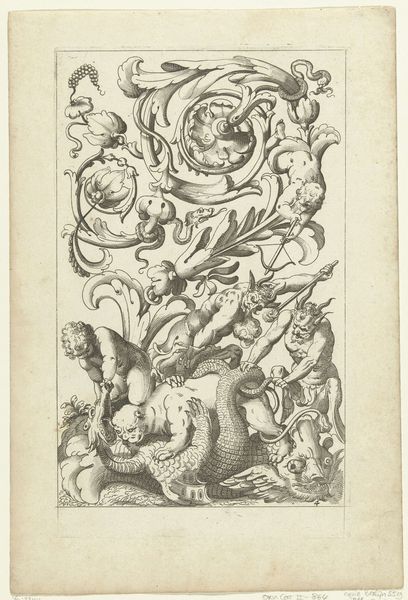
Vlakdecoraties, links de helft van een kandelaber, rechts een trofee van wapentuig 1480 - 1536
0:00
0:00
drawing, ink, engraving
#
drawing
#
pen drawing
#
11_renaissance
#
ink
#
geometric
#
line
#
engraving
Dimensions: height 220 mm, width 154 mm
Copyright: Rijks Museum: Open Domain
Curator: This engraving, rendered in ink, depicts ornament prints likely meant for metalwork decorations. The work is attributed to Daniel Hopfer and dates between 1480 and 1536, placing it squarely in the late Gothic and early Renaissance. It’s titled "Vlakdecoraties, links de helft van een kandelaber, rechts een trofee van wapentuig"—roughly, “Surface Decorations, the Left Half of a Candelabra, the Right a Trophy of Weaponry.” Editor: It's an intricate little world, isn’t it? My immediate reaction is of controlled chaos—so much detail crammed into a small space, yet meticulously organized. Curator: Hopfer excelled at these dense compositions, borrowing from classical and contemporary sources. Observe how on the left, the grotesque elements, those half-human, half-animal figures, twist amidst foliage to construct the idea of a candelabra. Editor: And the right side bristles with implements of war! Cannons, swords, helmets—all presented as artistic trophies, repurposed into a celebration of power and...well, perhaps, aggression. Were these motifs common? Curator: The imagery does tap into very strong Late Medieval associations and interests. Weapons, especially in conjunction with classical imagery, would resonate with notions of virtue and the strength of a ruling power, and the idea of decoratively integrating functional items can be observed across different mediums in the Renaissance period. Editor: It almost feels like propaganda, subtly glorifying the tools and trappings of authority. Though the inclusion of mythological beings hints at another angle too...what is their intended function? Curator: Well, that’s the beauty of iconographic images like these—the cultural memory they carried would shift according to who was viewing it, what specific symbol was prioritized, and how that all interacted within their lived context. A decorative engraving such as this speaks volumes about that culture’s psychological relationship with power and violence. Editor: Seeing how these stark depictions served to project dominance... I wonder how artisans would’ve received them. And, furthermore, how metalworkers themselves transformed these engravings when forging them into reality. Curator: Precisely, it speaks to how artisans played a part in that cultural language—shaping and communicating power through symbols. A fitting end note to an artistic and historical curiosity.
Comments
No comments
Be the first to comment and join the conversation on the ultimate creative platform.
